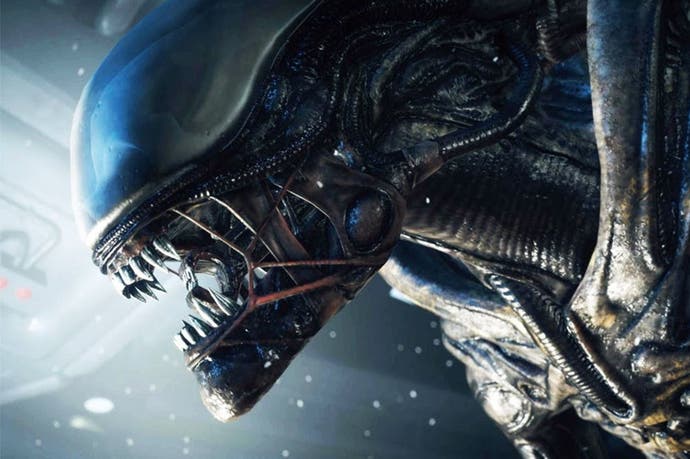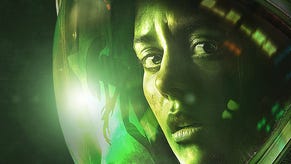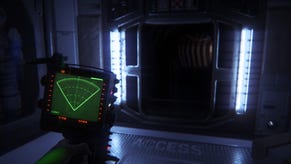Face-Off: Alien: Isolation
PS4 and Xbox One take on PC, 360 and PS3 in a five-way battle.
First impressions of Alien: Isolation suggested parity between the PS4 and Xbox One versions, with both sporting native 1080p visuals while sharing an extensive range of assets and graphical effects. Performance is an issue though, with PS4 commanding a distinct advantage thanks to a more consistent frame-rate and a complete lack of screen tear.
On the basis of those results, it seems like a clear win for Sony's system, but with the game available across no less than five different systems we were also interested to see how Creative Assembly's game translated onto the ageing Xbox 360 and PS3, and of course what benefits the PC version brings. On top of that, there was also those stuttering cut-scenes: what was causing that judder?
To kick things off, let's start by taking a close look at Alien: Isolation on PC. Early impressions suggest a game that is extremely easy to run at high frame-rates while requiring only modest hardware set-ups, but exactly what kind of experience are we getting compared to PS4 and Xbox One? We start by selecting a 1080p resolution to match the console versions and opt for SMAA T2x, the highest available anti-aliasing preset in the game.
Surprisingly, image quality closely reflects the consoles, with only minor differences in the AA pattern at a pixel level, leading us to believe that all three share the same basic method of dealing with jaggies. Long edges and sub-pixel details suffer from pixel crawl and shimmering, while shader aliasing is commonplace across specular reflections throughout the game. Still, while there's nothing you can do to improve image quality on console, on PC it's possible to force other anti-aliasing techniques via the GPU control panel to clean things up further.
Alternative comparisons:
Generally speaking, texture quality, modelling and lighting are a match between consoles and PC running at ultra settings. Texture filtering also appears to be identical. with all three versions operating using 16x anisotropic filtering, although there are a few discrepancies where some surfaces are filtered more cleanly on one system than another. The PC does benefit when it comes to shadows and ambient occlusion though. The use of contact-hardening soft shadows creates smooth-looking diffused edges, which appear more natural thanks to hard-edged shadows with dithered filtering. Meanwhile, HDAO appears to be present across all three formats, although the effect is a little more buggy on PC. Some surfaces seem to lack coverage in certain scenes, while the effect is visibly present elsewhere. [UPDATE 12/10/14 09:36: Creative Assembly has confirmed that HDAO isn't implemented on console].
So far, it's fair to say there's only a minor boost in graphics quality on PC compared to PS4 and Xbox One. Instead, the major differential rests with performance, where PC completely trounces consoles. Obviously this comes down to individual hardware configurations, but benchmark tests show high frame-rates using mid-range GPUs, even with ultra settings enabled. Cards such as the Radeon HD 7870 can hit 60fps, while high-end GPUs manage well over 100fps. Our own gaming rig featuring an Intel Core i5 3570 and GTX 780 has no problems in delivering a solidly v-synced 60fps at 1080p using ultra settings, resulting in an experience that looks and feels so much smoother to play than the PS4 and Xbox One versions.
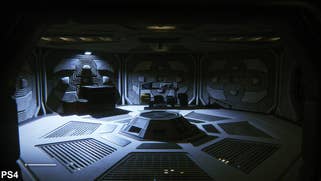
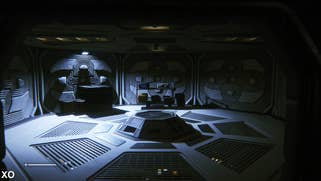




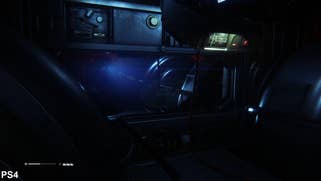

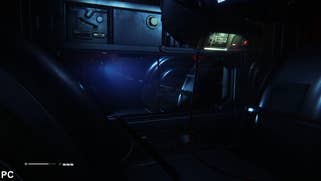



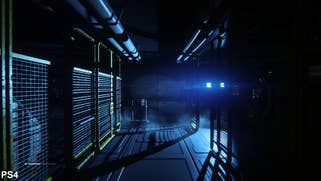

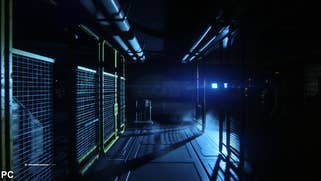
In comparison, both consoles target 30fps as the target frame-rate, although neither manages to solidly stick to it under load. Performance is mostly stable on PS4 with frame-rates incurring a light drop in combat, but the action remains v-synced at all times, so we never encounter any tearing. The main distraction comes in the form of brief freezes throughout the game, which temporarily sees frame-times languishing in the 200-460ms area, depending on the length of the pause.
A look at the Xbox 360 and PS3 builds suggests poorly optimised asset streaming could be the cause. Xbox One code suffers from fewer issues with the engine stalling, although the game struggles to maintain anything approaching a consistent 30fps. Frame-rates are extremely variable, with gameplay averaging 28fps for prolonged periods, with some noticeable screen tearing. Essentially, the framebuffer is flipped a little late if the render isn't able to deliver a complete frame in time for a 33.33ms refresh.
Judging by PC results on lower-end hardware, it doesn't seem outside the realms of possibility for the PS4 - and to a lesser extent the Xbox One - to deliver something closer to a 60fps experience given the benefits of closed-box optimisation. So what could be the limiting factor on consoles? Perhaps the low-power AMD CPU cores are to blame.
Moving on, performance is unbelievably disappointing across all formats during cut-scenes, where no version of the game delivers a satisfactory experience. These appear to be capped at 30fps on PC but still suffer from frequent judder that ruins any cinematic impact. On console things are considerably worse, with variable frame-rates dropping into the low 20s and below as these sequences degrade into a stuttering mess. Curiously, some scenes see the Xbox One gain a distinct advantage over the PS4 and vice versa.
The cause of the judder comes from constant uneven frame delivery, where we see some frames rendered at 16.67ms, some at 33ms and others at 50ms. What is interesting is these scenes don't appear to be rendered in real time. Instead, they appear to have been created using offline-rendered in-game assets. It seems that video playback is severely impacted by the game loading data in the background and this causes skipped frames, judder and massive variances in performance.
Alien: Isolation is primarily built around running on next-gen hardware, but the game is also available for the Xbox 360 and PS3 and we were particularly interested to see how well the experience holds up on these ageing consoles. Does the lack of raw horsepower lead to significant changes to the graphical make up of the game, or has Creative Assembly managed to keep the core experience intact despite steep technological limitations?
Remarkably, as we saw with Bungie's Destiny, the look and feel of Alien: Isolation successfully translates over to the last-gen hardware - dynamic lighting and volumetric fog effects infuse the world with plenty of atmosphere, while environments remain highly detailed and authentic to the developer's original vision. That said, there are inevitably some significant cuts in graphical quality that eat away at the game's moody presentation.
Resolution is dropped from the native 1080p to a more manageable sub-HD framebuffer. In this case we're looking at something in the region of 1120x680 on 360 and an even lower 960x680 on PS3, with both versions sporting cheap post-process anti-aliasing solutions that miss plenty of edges while impacting texture quality significantly [UPDATE 12/10/14 09:36: Creative Assembly says that both last-gen console versions have a 720p vertical resolution, but there's definitely a significant reduction on both versions' horizontal]. The reduction in resolution means the game looks softer, while upscaling accentuates jaggies - issues that affect the PS3 version more prominently due to its smaller framebuffer.
Geometry detail doesn't appear wildly different to the PS4, Xbox One and PC builds, with the modelling of characters and environments comparing favourably, although incidental details - such as debris and papers scattered across the floor - are either removed or cut back. Additionally texture detail, normal maps, lighting and effects work are also pared back to accommodate the massive drop in available memory capacity and processing power compared to the PS4 and Xbox One.



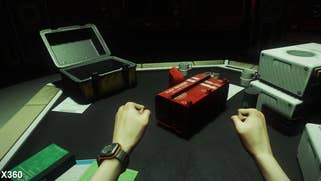
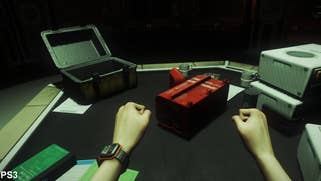
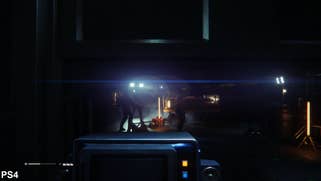
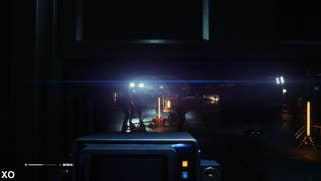

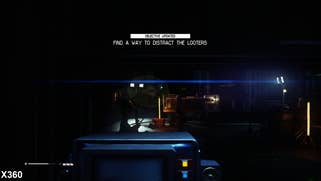
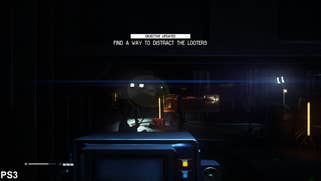



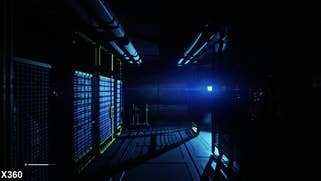
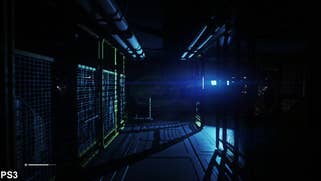










On the whole, indirect light sources are given the chop, fewer objects cast shadows, lens flare is simplified and chromatic aberration effects are gone, while ambient occlusion is downgraded to a low-quality SSAO implementation that looks rough. Camera and object blur are also missing entirely on 360 and PS3, reducing the intensity of fast-paced scenes and combat encounters, although depth of field and film grain effects remain present, so the game doesn't entirely lose the filmic look Creative Assembly is aiming for. Besides the downgrade in resolution, PS3 owners are also hit with lower-resolution textures and normal maps, along with a graphical bug that results in missing specular reflections on some surfaces.
Performance wise, Alien: Isolation is a shaky affair on last-gen consoles, with both versions suffering from heavy frame-rate drops from the target 30fps and plenty of screen tear. Out of two consoles it's the Xbox 360 that comes out on top under load - particularly in scenes where there are a number of light sources and alpha-based effects on-screen - although frame-rates still regularly take a dive down to the mid-twenties and below in these situations. Demanding scenes hit the PS3 much harder as the game stutters itself through more detailed locations. Shockingly, frame-rates come crashing down still further at some points, as the engine stalls while waiting for data to be streamed in.
Both versions suffer from these stalls in rendering, although the issue is more prevalent on PS3. Alien: Isolation requires installation on both consoles, with the game streaming data concurrently from disc and hard drive. On 360, content from the first disc is automatically installed while the game runs from the second disc. This set-up is supposed to increase available bandwidth and alleviate streaming issues, but performance is still impacted. As the game briefly freezes we can hear the disc drive chugging away as it tries to load the relevant data in time. As with other games that dual-stream from both physical media and the HDD, we advise not to install the second disc as this could worsen these performance issues.
Loading times in general are very long between missions and also disrupt gameplay when moving from one large location to another. Often we find ourselves waiting 10 seconds or more for doors to open, while some scripted events take even longer to kick in. In one sequence the Alien failed to load in at all and we were left taking on enemies that were supposed to die at the hands of the Xenomorph for story purposes but instead just stood around waiting while the game played sound effects of their demise.
Alien: Isolation - the Digital Foundry verdict
Creative Assembly wanted parity between PS4 and Xbox One and on the basis of image quality, detail and effects work it has managed it, but while native 1080p sharpness may please Xbox One owners, it has come at a cost, because while the Xbox One version delivers the core Alien experience mostly intact, overall immersion is compromised by frequent drops in fluidity. Performance is obviously the deciding factor here and it's clear PS4 has a distinct advantage. As such the PS4 game gets our recommendation for console owners, even though we're left with the nagging feeling that 60fps should have been possible on Sony's hardware based on the game's PC showing.
It's worth noting that Alien: Isolation takes advantage of specific features in both consoles to enrich the gameplay experience. PlayStation Camera and Kinect offer head-tracking so you can physically lean to look around corners in the game, while the microphone allows the Alien to track you via real-world audio. The DualShock 4 speaker also outputs the pulse of your motion tracker, which is a nice touch. These features can be disabled if they aren't to your taste, but we enjoyed them.
The last-gen releases of Alien: Isolation feature all of the core elements found in the PS4, Xbox One and PC releases to successfully recreate the suspense and much of the atmosphere of the top-end versions. However, the experience is compromised by low frame-rates and a rough, sub-720p presentation that makes it much harder to remain immersed. Xbox 360 gets the nod here, although some detail is lost to black crush in darker areas.
In the final analysis, the PC game is the definitive version of Alien: Isolation. While the level of graphical quality is only marginally improved over PS4 and Xbox One, the game is easy to run across a wide range of configurations, so 1080p at 60fps is achievable on older GPUs without having to dramatically lower graphical presets, while the low system requirements of the game easily open up running at 1440p at high frame-rates. A key advantage of PC gaming is the ability to scale the experience to your specific hardware, and the headroom available in Alien: Isolation opens up a vast range of options. Oculus Rift, anyone?
